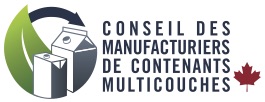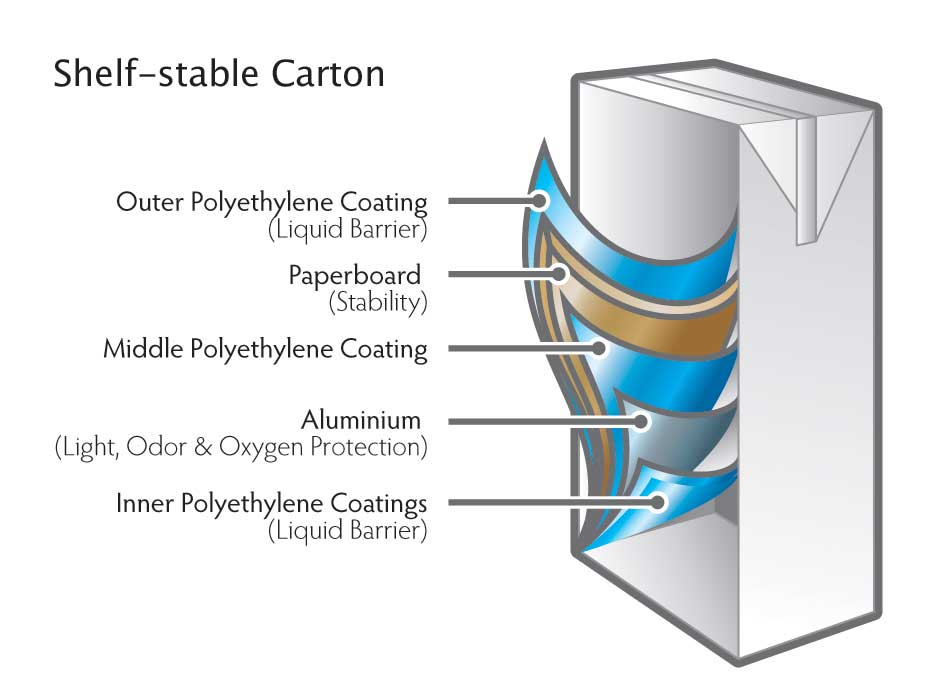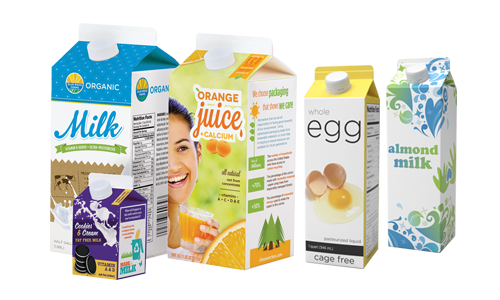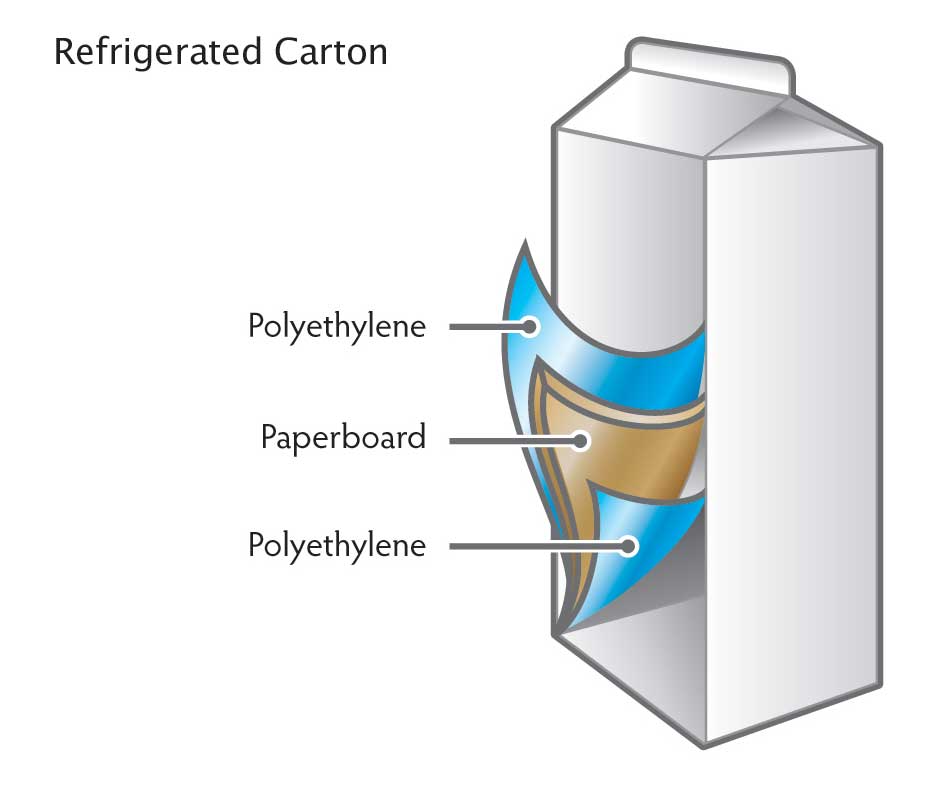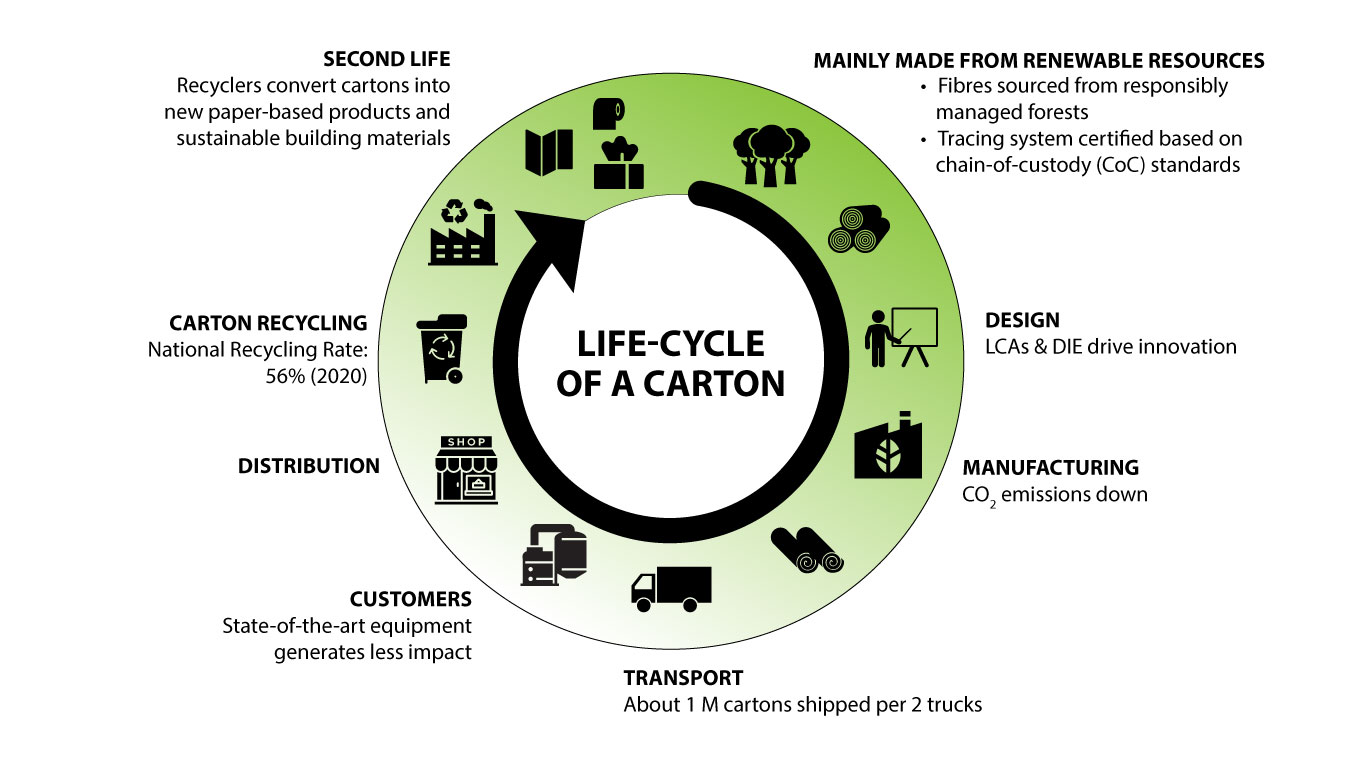Shelf-stable cartons contain on average 74% paper, 22% polyethylene and 4% aluminum. Products in shelf-stable cartons include items such as juice, milk, soy and grain milk, soup and broth and wine.
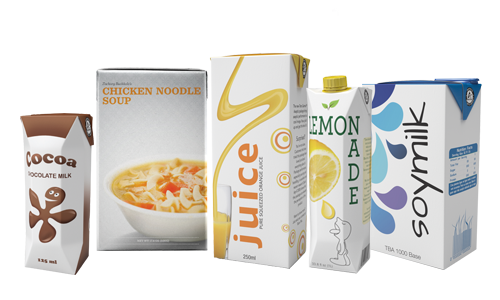
Download carton diagrams
Environmental profile of cartons
The Carton Council members are dedicated to environmentally preferable practices throughout the entire life-cycle of a carton package. By producing sustainable and carbon smart products made mainly from a renewable resource; consumers can wisely select cartons as one of the best package choices to meet their food and environmental needs. The life-cycle of a carton is illustrated here:
Carton Facts
- Cartons are mainly made from paper. The paper in our cartons comes from growing forests where trees are replaced by new ones and biodiversity is maintained. None of the resources used in our cartons come from old growth trees or rainforests.
- Cartons are light-weight and have a great product to package ratio. If you choose a product in a carton, you are taking home an average of 94% product and only 6% package.
- Products packaged in cartons are transportation efficient. In general, the same amount of product can be shipped in fewer trucks. Fewer trucks = less fuel = less greenhouse gas emissions.
- Big or small, recycle them all! Cartons are recyclable.

